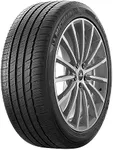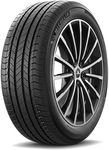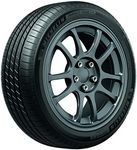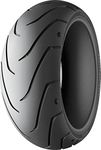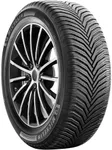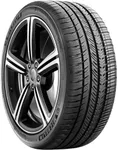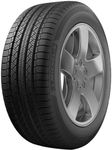Buying Guide for the Best Michelin Tires
Choosing the right Michelin tires for your vehicle is crucial for ensuring safety, performance, and comfort. Tires are the only part of your vehicle that make contact with the road, so selecting the right ones can significantly impact your driving experience. When picking Michelin tires, consider factors such as the type of vehicle you drive, your driving habits, and the typical weather conditions in your area. Understanding the key specifications of tires will help you make an informed decision that best suits your needs.Tire SizeTire size is a combination of numbers and letters found on the sidewall of the tire, indicating its width, aspect ratio, and diameter. This spec is important because it ensures the tire fits your vehicle properly. Tire sizes are divided into segments such as width (measured in millimeters), aspect ratio (the height of the tire's sidewall as a percentage of the width), and diameter (the size of the wheel the tire fits). To pick the right size, refer to your vehicle's owner manual or the placard on the driver's side door jamb. Using the correct tire size ensures optimal performance and safety.
Tread PatternThe tread pattern of a tire affects its grip, handling, and noise levels. There are three main types of tread patterns: symmetrical, asymmetrical, and directional. Symmetrical patterns offer a smooth ride and long tread life, making them suitable for everyday driving. Asymmetrical patterns provide better handling and performance, ideal for sporty driving. Directional patterns are designed for high-speed stability and excellent water evacuation, perfect for wet conditions. Choose a tread pattern based on your driving style and the typical road conditions you encounter.
Tread LifeTread life refers to the expected lifespan of a tire's tread, usually measured in miles. This spec is important because it indicates how long the tire will last before needing replacement. Tread life can vary significantly based on the tire's design and the materials used. Tires with longer tread life are ideal for drivers who cover a lot of miles, while those with shorter tread life may offer better performance or grip. Consider your driving habits and how often you want to replace your tires when evaluating tread life.
Seasonal PerformanceSeasonal performance indicates how well a tire performs in different weather conditions. There are three main categories: all-season, summer, and winter tires. All-season tires provide a balance of performance in various conditions, making them suitable for moderate climates. Summer tires offer superior handling and grip in warm weather but are not suitable for cold or snowy conditions. Winter tires are designed for optimal performance in snow and ice, providing better traction and safety in harsh winter weather. Choose a tire based on the typical weather conditions in your area and your driving needs.
Load Index and Speed RatingThe load index indicates the maximum weight a tire can support, while the speed rating denotes the maximum speed at which the tire can safely operate. These specs are important for ensuring the tire can handle the weight of your vehicle and your driving speed. Load index values range from 70 to 126, with higher numbers indicating greater load capacity. Speed ratings are represented by letters, with common ratings including S (up to 112 mph), T (up to 118 mph), and H (up to 130 mph). Refer to your vehicle's specifications to choose tires with the appropriate load index and speed rating for safe and reliable performance.
Traction and Temperature RatingsTraction and temperature ratings are part of the Uniform Tire Quality Grading (UTQG) system, which provides information on a tire's performance. Traction ratings (AA, A, B, C) indicate the tire's ability to stop on wet surfaces, with AA being the highest rating. Temperature ratings (A, B, C) measure the tire's resistance to heat, with A being the best. These ratings are important for understanding how well a tire will perform in different conditions. Choose tires with higher traction and temperature ratings for better safety and performance, especially if you drive in challenging conditions.

